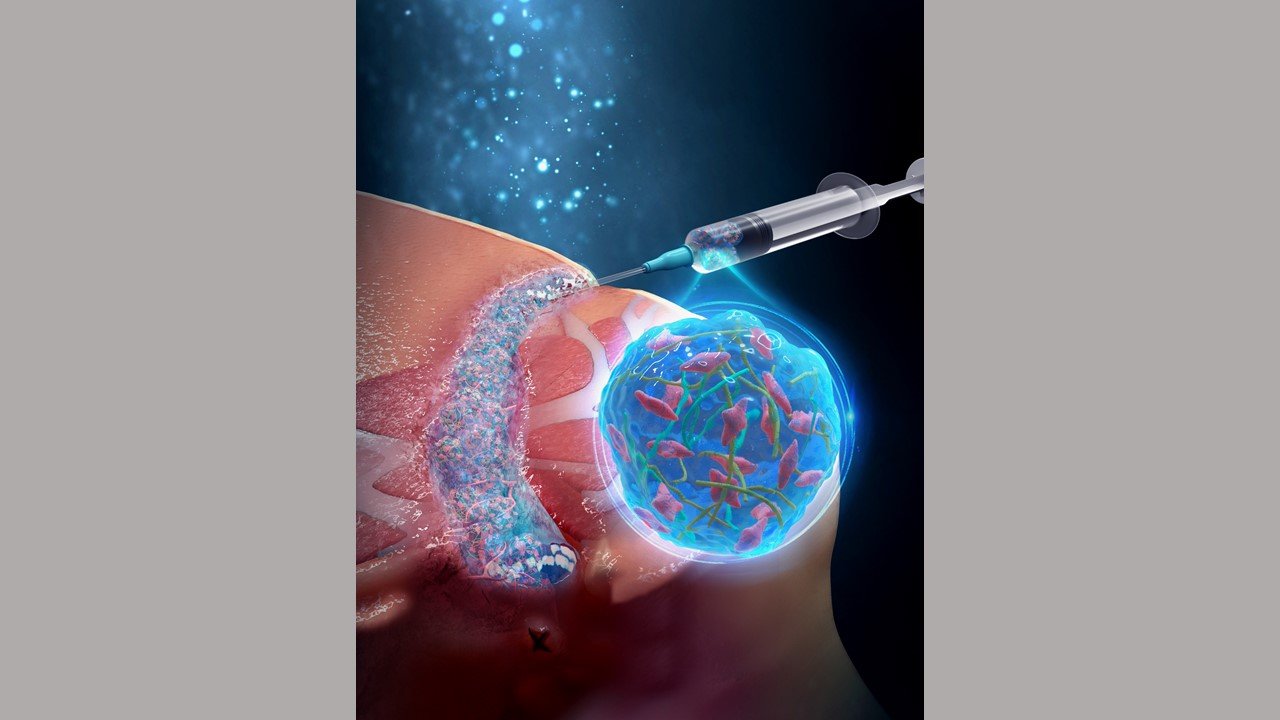Antimicrobial gel could revolutionise tissue engineering
Researchers from UNSW Sydney developed a bacteria-killing gel that mimics human tissue and grow cells and even miniature organs.
Despite being a relatively recent field, tissue engineering has made great strides in improving modern medicine, and is set to achieve truly science-fiction breakthroughs in the near future.
However, such future innovations, as well as current essential procedures such as organ transplants, are under threat by a growing problem in our society:
Antimicrobial resistance
The number of antimicrobials approved each decade is falling, while drug-resistant strains of bacteria are becoming more and more frequent. This could cause even common bacterial diseases to become deadly and is estimated to kill 10 million people yearly by 2050.
Approved antibiotics vs approved cancer drugs
In their paper published in Nature Communications, Prof. Kilian and his team discovered a hydrogel with potent antibacterial properties. This structure resembles the natural 3D networks that surround and support cells in our body, much like a soccer net can support a ball.
Despite hydrogels having been synthesized and researched for over a century, many aspects make this newest material stand out as having exceptional potential in biomedical applications:
Firstly, the gel's tissue-like structure allows cells to grow on it as effectively as the stock standard cell-growth media. One of the challenges with conventional media is the need for sterile conditions to prevent bacterial growth, restricting its use to specialised lab conditions.
Promisingly, the potent antibacterial activity of this gel could allow it to be applied in real-world settings and protect against infection.
Another real-world advantage of these gels is that they can protect cells from mechanical damage when injected with a syringe.
Under pressure, the gel assumes a ‘fluid’ state that can safely carry cells, before setting back into a gel. This property could prove invaluable for depositing live cells into a desired location of the body.
The feasibility and value of this technique was demonstrated by Johns Hopkins researchers earlier this year, who used another fluid hydrogel to treat the side effects of Chron’s disease.
Hydrogels can create organoids!
Organoids can be described as miniature, three-dimensional structures derived from stem cells. They are useful in modelling diseases, drug toxicity testing, and in the future could form complex tissues for transplantation.
Kilian’s gel has overcome a major limitation in the development of these organoids, by fostering their development with an outward-facing apical membrane. This membrane is usually what drugs come in contact with in the body, but is hard to access in conventionally grown organoids.
These improved organoids will enhance the efficacy of drug treatment testing, disease modelling and tissue engineering!
Overall, the combined unique properties of these hydrogels, including their bioactivity, antimicrobial nature, and regenerating capabilities further provide a wealth of assets in advancing the current and future applications of tissue engineering and regenerative medicine!
Thank you for reading, I hope you had fun this week!
Feel free to message your thoughts and send through suggestions for future newsletters below.





